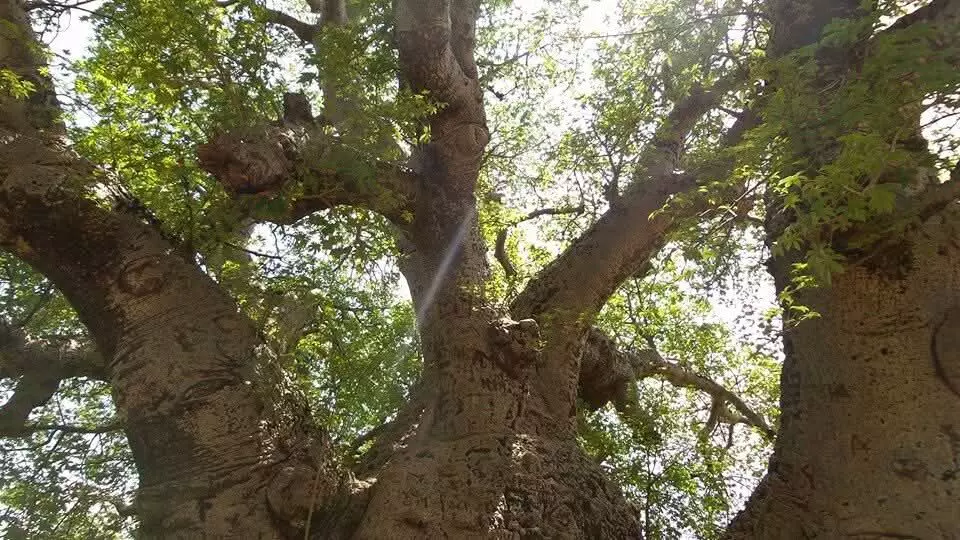440 years and counting: All you want to know about Asia’s largest Baobab tree in Hyderabad
Around ten years ago, the ASI even declared it a ‘protected monument’
By Beyniaz Edulji
Asia’s largest Baobab tree in Hyderabad.
Hyderabad: Most Hyderabad residents will be surprised to know that the largest Baobab tree in Asia has been growing steadily for at least 440 years at Naya Quila, Golconda Fort.
Around ten years ago, the ASI even declared it a ‘protected monument’ after environmental activists requested that this unique tree of African origin get protection as there were complaints of locals causing damage.
Origin of the baobab tree
The origin of this ancient 440-year-old African Baobab (adansonia digital)at Naya Quila is shrouded in mystery. Its trunk is more than 75 feet wide, and it is from Madagascar. It is supposed to have been planted from seed by wandering friars during their stay in Golconda centuries ago. Others insist that it was brought here by Africans who worked for the Qutub Shahi Kings.
The Elephant Tree
It is said to be one of the biggest Baobabs outside Africa and Australia, and the gigantic tree is popularly called ‘Hathiyan ka Jhad’ or the elephant tree as its trunk resembles an elephant. Thousands of tourists visit the Golconda Fort without realizing the living treasure growing nearby. The Golconda baobab is now under the care of the Archaeological Survey of India (ASI).
The ‘elephant tree’ at Golconda Fort, the biggest baobab outside Africa and Australia, was considered to be threatened by climate change and an artificial environment induced by increased human activity in the 500-year-old fort complex. Close by is the beautiful Mullah Khayali Masjid, built to honor the poet of the Qutub Shahi Court.
Legends and Tales
This tree is the subject of folklore and local tales. It is said to have sheltered hundreds during the Hyderabad floods; it is also said to be a hiding place for a dozen thieves who used to hide in its hollow trunk and only come out at night so they could not be traced.
Kinds of Baobab
There are eight species of baobab in the world: six are found in Madagascar, an island in the Indian Ocean, one is found in Africa, and the last is in Australia. The one growing at Golconda is a variety from Madagascar. The African baobab is remarkable not only because of its size, lifespan, fruit, and bark but also because of the way it continually grows fused stems. The bark regenerates in the space between these stems, called false cavities.
Oldest and largest tree
Hyderabad has a dozen baobab trees, but this one is the oldest and largest. Baobab trees generally do not show any external signs of damage but fall suddenly due to the drying up of the trunk from the inside. The construction of a protection platform of cement and bricks and visitors climbing on its branches to enter its false cavity has taken its toll in the past.
Some of the baobabs in the city were pulled down over the years for road widening and ORR works. The ones still surviving can be found in Attapur, Secunderabad Club, Ranganath temple, Vanasthalipuram, Chapel Road, and the ChengicherlaReserve Forest. All these trees are at least 200 years old.